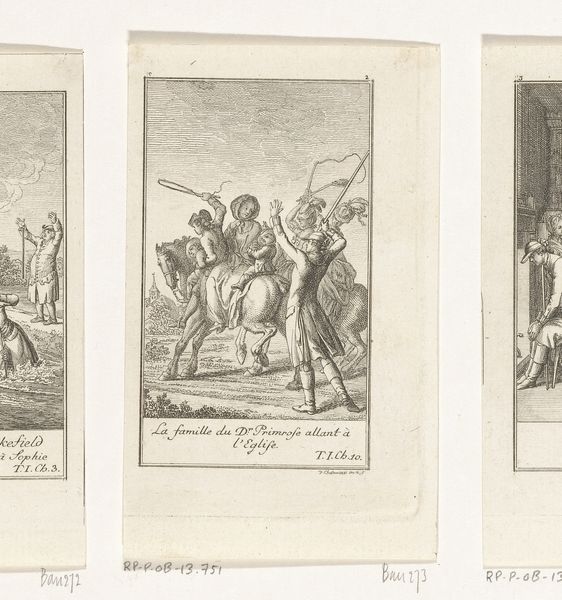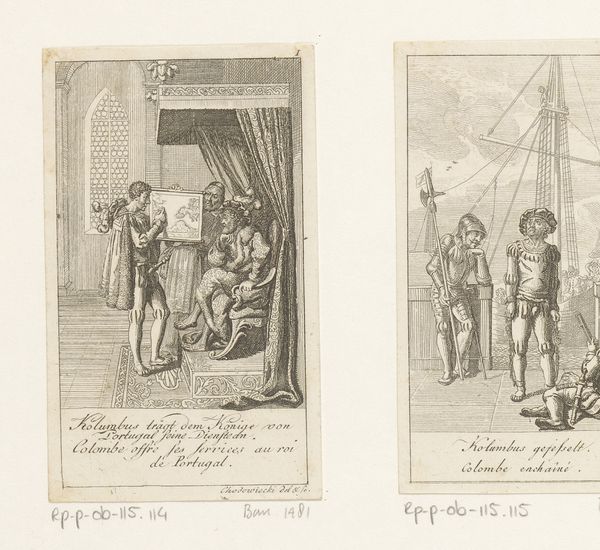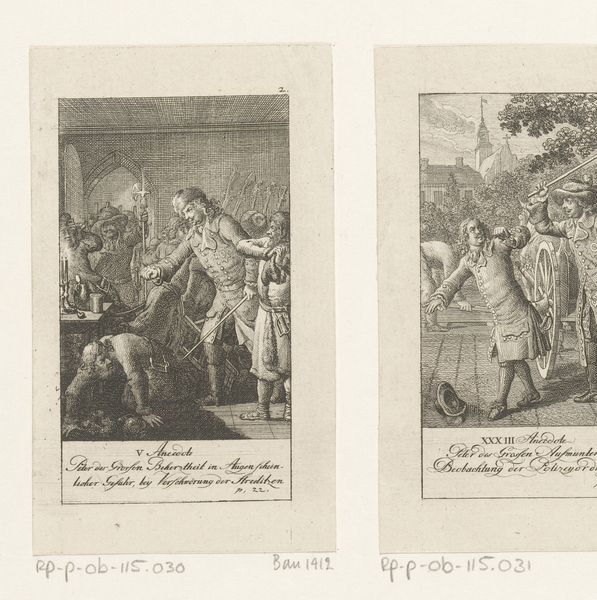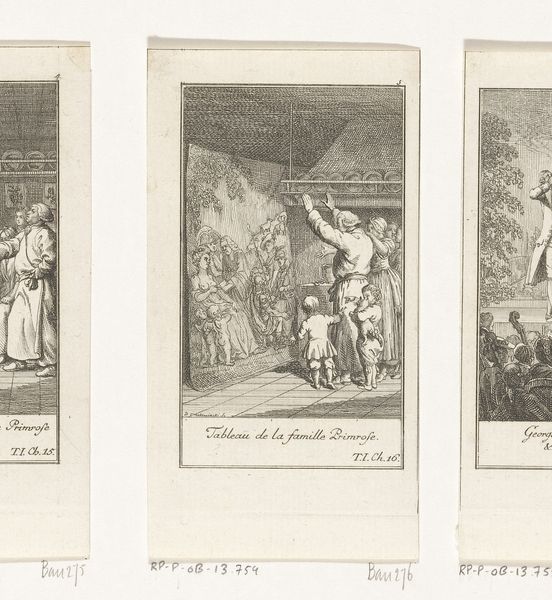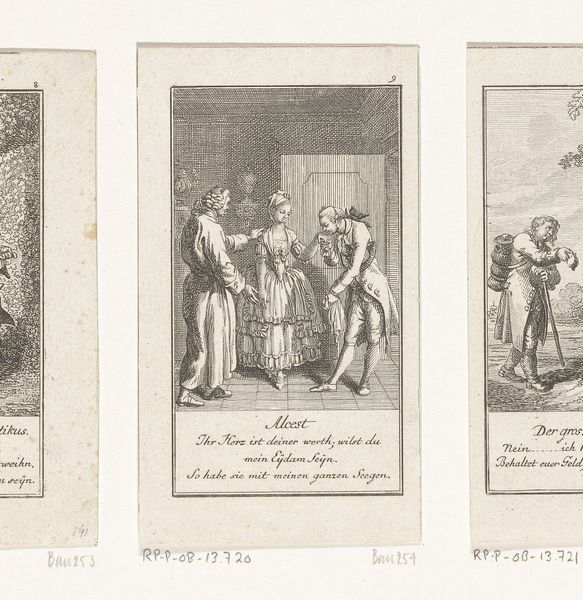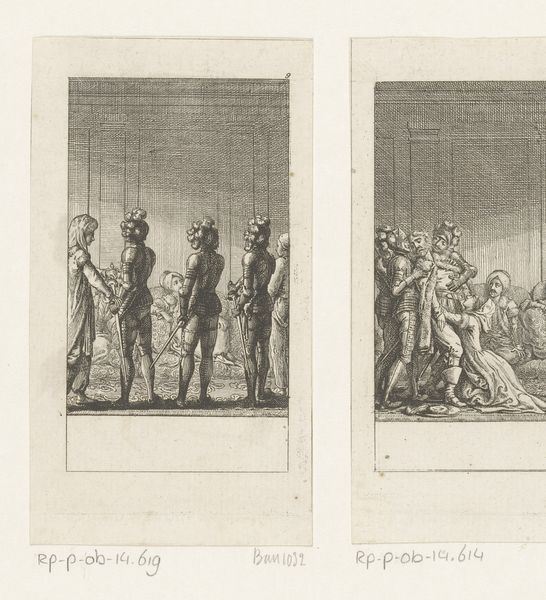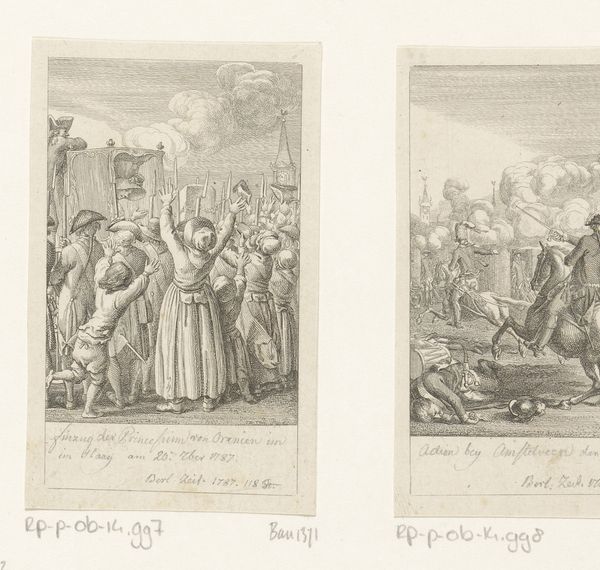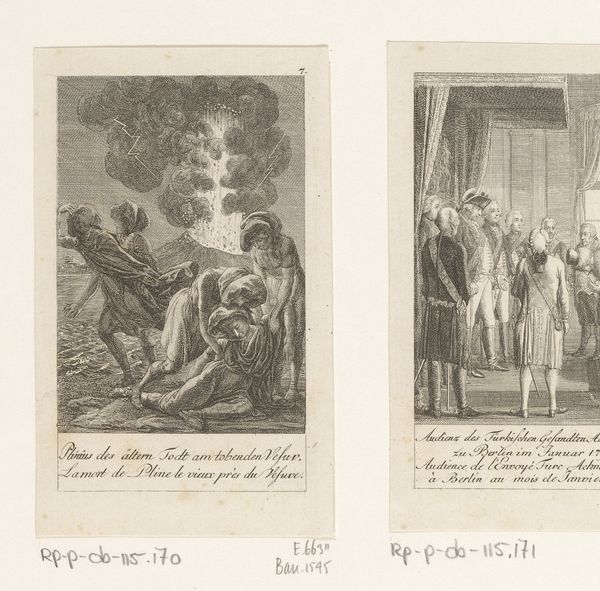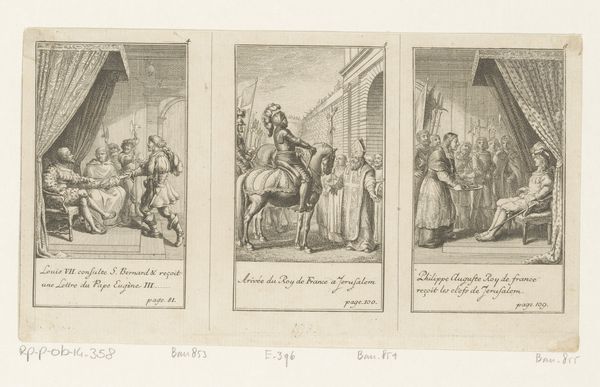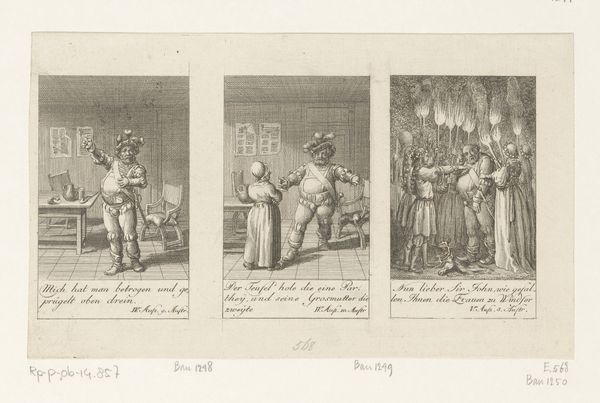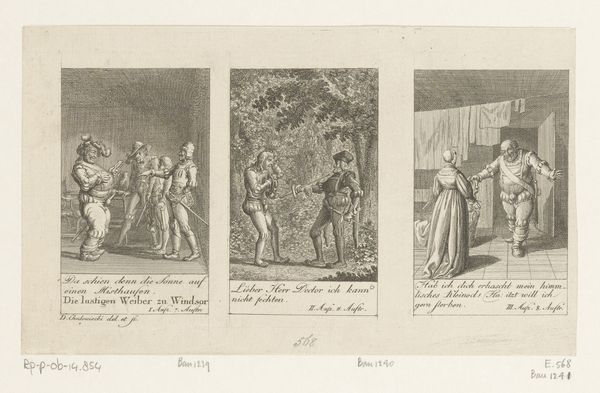
Ruzie tussen Falstaff en de waardin in bijzijn van Henry en Bardolph 1785
0:00
0:00
danielnikolauschodowiecki
Rijksmuseum
print, engraving
#
neoclacissism
#
narrative-art
# print
#
genre-painting
#
history-painting
#
engraving
Dimensions: height 92 mm, width 58 mm
Copyright: Rijks Museum: Open Domain
Curator: Look closely at this 1785 engraving by Daniel Nikolaus Chodowiecki, titled “Ruzie tussen Falstaff en de waardin in bijzijn van Henry en Bardolph,” housed here at the Rijksmuseum. Editor: It strikes me immediately as rather theatrical, doesn't it? The scene is tightly framed, almost claustrophobic, intensifying the sense of conflict between these figures. Curator: Indeed. Chodowiecki, a prominent figure in the Berlin Academy of Arts, was known for his narrative prints. This piece exemplifies his commitment to illustrating stories, in this case drawing from Shakespeare's "Henry IV." It presents a vivid snapshot of a dispute between Falstaff and the Hostess, a scene steeped in social and political tension. Editor: What particularly grabs me is the portrayal of Falstaff himself. He embodies excess, literally overflowing his britches, right? His puffed-up posture seems designed to intimidate, a theatrical performance of masculinity and authority in a very precarious balance. Curator: Precisely. His presence, juxtaposed against the other figures – Henry, Bardolph, and the Hostess – speaks volumes about power dynamics and societal hierarchies. He challenges traditional notions of nobility. Note how the artist places him within the confines of a tavern, a liminal space, which reflects the anxieties around class and social mobility in late 18th-century Europe. This reflects a fascination with common people. Editor: And the Hostess? I find her equally compelling. She seems defiant, rooted in her own space, refusing to be intimidated by Falstaff's bluster. To me, the struggle isn’t simply about money or a bar brawl, but also one between an established male dominance and a woman claiming her due in a very male world. Curator: Absolutely, it provides insight into a broader context and into how we conceptualize our identities, our gender roles, our politics through everyday dramas. Editor: Examining this print reminds us that art is always in conversation with the historical moment from which it emerges, providing a valuable space to investigate power relations within and beyond. Curator: I agree. Chodowiecki offers not merely an illustration of Shakespeare, but a lens through which to examine the intricacies of 18th-century social life.
Comments
No comments
Be the first to comment and join the conversation on the ultimate creative platform.
